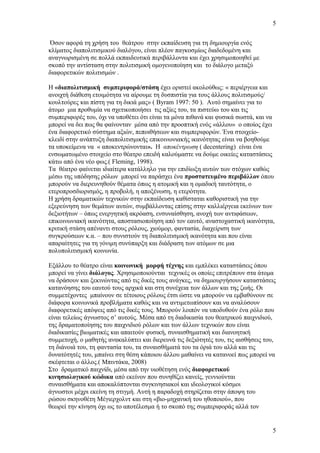The Russian Military's Actions: A Growing Threat To European Stability

Table of Contents
The Ukraine Conflict and its Destabilizing Effect
The ongoing conflict in Ukraine is the most prominent example of the Russian military's destabilizing actions in Europe. The scale of the invasion and the brutality of the conflict have shaken the foundations of European security.
Military Escalation and Human Rights Violations
The Russian military's actions in Ukraine have been widely condemned as violations of international law and human rights. Numerous reports from human rights organizations, such as Human Rights Watch and Amnesty International, document widespread atrocities, including:
- Shelling of civilian areas: Intentional targeting of residential areas, schools, and hospitals resulting in significant civilian casualties.
- Targeting of critical infrastructure: Destruction of power grids, water supplies, and other essential services, leaving millions without access to basic necessities.
- War crimes and crimes against humanity: Allegations of torture, rape, extrajudicial killings, and the forced displacement of civilians.
- Use of indiscriminate weapons: Employment of weapons that cannot distinguish between civilian and military targets.
These actions have resulted in a massive humanitarian crisis, with millions of Ukrainians displaced and seeking refuge in neighboring countries. The casualty figures, while still being assessed, are staggering, painting a grim picture of the human cost of Russia's military aggression. International condemnation of these actions has been widespread, with numerous countries imposing sanctions and launching investigations into potential war crimes.
Impact on Regional Stability
The Ukraine conflict has far-reaching consequences beyond its immediate borders. The crisis has triggered:
- A major refugee crisis: Millions of Ukrainians have fled their homes, straining the resources of neighboring countries and creating significant social and economic challenges.
- Significant economic consequences: The conflict has disrupted global supply chains, leading to increased energy prices and inflation in Europe and beyond.
- Shifts in regional alliances: The conflict has strengthened the resolve of NATO and further solidified its commitment to collective defense.
- Increased military spending by neighboring countries: Several countries bordering Russia have increased their defense budgets in response to the perceived threat.
Military Buildup and Aggressive Posturing Near NATO Borders
Beyond Ukraine, Russia's military activities near NATO borders are a major source of concern. The significant troop and weapons deployments represent a direct challenge to European security and raise serious questions about Russia's intentions.
Deployment of Troops and Weapons Systems
Russia has significantly increased its military presence near NATO borders, including:
- Deployment of advanced weaponry: This includes sophisticated missile systems, tanks, and other heavy weaponry capable of rapidly launching large-scale offensives.
- Increased troop numbers: A substantial increase in Russian troops stationed near NATO member states, signaling a readiness for potential military action.
- Strategic positioning: The deployment of troops and weapons is often strategically positioned to threaten NATO infrastructure and key transportation routes.
- Satellite imagery evidence: Satellite images have provided compelling visual confirmation of these deployments, further highlighting the gravity of the situation.
Increased Military Exercises and Strategic Implications
Russia conducts frequent and large-scale military exercises near NATO borders. These exercises:
- Test military readiness: They serve as rehearsals for potential conflicts, honing the capabilities and coordination of Russian forces.
- Demonstrate military power: The scale and proximity of these exercises are intended to project power and influence, potentially intimidating neighboring countries.
- Undermine deterrence: These actions could challenge the credibility of NATO's collective defense commitments and erode deterrence.
- Signal intent: The increased frequency and intensity of these exercises raise concerns about Russia’s intentions, sending a worrying message regarding their willingness to use military force.
Cyber Warfare and Information Operations
Russia's use of cyber warfare and information operations further destabilizes the region and undermines trust in democratic institutions.
Disinformation Campaigns and Propaganda
Russia engages in sophisticated disinformation campaigns aimed at:
- Undermining public trust: Spreading false narratives and propaganda to erode public confidence in democratic institutions and media outlets.
- Dividing societies: Exploiting existing social and political divisions within European countries to sow discord and instability.
- Influencing elections: Interfering in elections through cyberattacks and the dissemination of disinformation.
- Promoting pro-Russia narratives: Pushing narratives that legitimize Russia's actions and undermine the legitimacy of its adversaries.
Cyberattacks and their Impact on Critical Infrastructure
Russia possesses the capability to launch devastating cyberattacks against critical infrastructure in European countries, potentially targeting:
- Energy grids: Disrupting power supply and causing widespread blackouts.
- Transportation networks: Paralyzing transportation systems and disrupting logistics.
- Financial institutions: Causing significant financial losses and destabilizing the economy.
- Healthcare systems: Disrupting healthcare services and endangering public health.
The potential consequences of successful cyberattacks are severe, emphasizing the importance of robust cybersecurity measures and international cooperation to mitigate these risks.
International Response and Efforts to Maintain Stability
The international community is responding to Russia's aggressive actions, though a unified and effective response remains challenging.
NATO's Response and Deterrence Strategies
NATO has significantly increased its military presence in Eastern Europe to deter further Russian aggression. This includes:
- Increased troop deployments: NATO has deployed additional troops and equipment to its eastern flank to reinforce its collective defense posture.
- Enhanced military exercises: NATO conducts regular military exercises to demonstrate its readiness to respond to any potential aggression.
- Sanctions against Russia: NATO members have imposed a wide range of sanctions against Russia to punish its actions and deter further aggression.
- Diplomatic initiatives: NATO has engaged in diplomatic efforts to de-escalate tensions and find a peaceful resolution to the conflict.
EU's Role in Maintaining European Security
The European Union is also playing a crucial role in responding to the threat posed by Russia's military actions. This includes:
- Financial sanctions: The EU has imposed substantial financial sanctions on Russia, targeting key individuals and entities.
- Diplomatic pressure: The EU is actively involved in diplomatic efforts to resolve the conflict peacefully and prevent further escalation.
- Support for Ukraine: The EU has provided substantial financial and humanitarian assistance to Ukraine.
- Strengthening EU defense capabilities: The EU is working to strengthen its collective defense capabilities to better respond to threats.
Conclusion
This article has highlighted the multifaceted threat posed by the Russian military's actions to European stability. From the ongoing conflict in Ukraine to aggressive military posturing and cyber warfare, Russia's behavior is creating a volatile and unpredictable security environment. The international community must continue to work together to address these challenges and prevent further escalation. Understanding the scope and implications of the Russian military's actions is crucial for maintaining European stability. Continued vigilance, strong international cooperation, and robust deterrence strategies are necessary to counter this growing threat and ensure the security of European nations. Further research into the implications of Russian military actions is encouraged.

Featured Posts
-
 Returning To Familiar Favorites Older Viewers And You Tube
Apr 29, 2025
Returning To Familiar Favorites Older Viewers And You Tube
Apr 29, 2025 -
 Update Search Continues For Missing British Paralympian In Las Vegas
Apr 29, 2025
Update Search Continues For Missing British Paralympian In Las Vegas
Apr 29, 2025 -
 Ypologistes Apo Ines I Epanastasi Stin Parakoloythisi Tis Ygeias
Apr 29, 2025
Ypologistes Apo Ines I Epanastasi Stin Parakoloythisi Tis Ygeias
Apr 29, 2025 -
 Building Voice Assistants Made Easy Open Ais 2024 Developer Announcements
Apr 29, 2025
Building Voice Assistants Made Easy Open Ais 2024 Developer Announcements
Apr 29, 2025 -
 The Role Of Misogyny Mhairi Blacks Perspective On Womens And Girls Safety
Apr 29, 2025
The Role Of Misogyny Mhairi Blacks Perspective On Womens And Girls Safety
Apr 29, 2025
